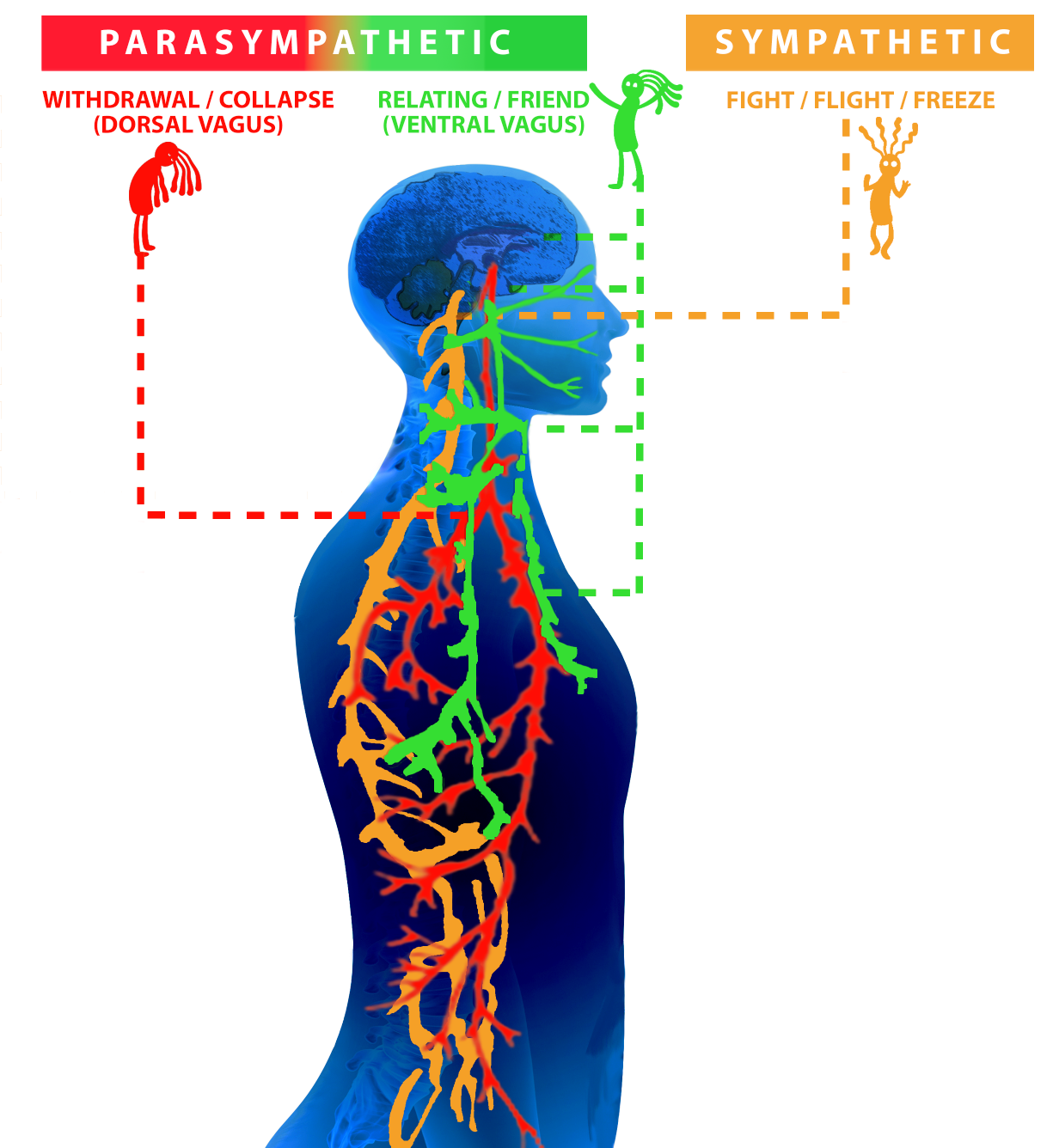By Debra Pearce-McCall, PhD
Conversational Intelligence Leader & Senior Consultant
Situation #1: Taylor walks into the meeting and, as the door swings open, folks look over with relaxed interest. Charlie pauses, then turns and smiles – cheeks and mouth curving up, eyes and forehead crinkling – before continuing to talk in animated, fluid tones. Pat looks directly at Taylor and gestures to the open seat with a head toss and a grin.
Situation #2: Taylor walks into the meeting, and as the door swings open, folks look over with narrowed stares. Charlie pauses, then turns and smiles – flushed cheeks pulling up tight lips into an arc – before continuing to talk in a low, forceful monotone. Pat looks away as Taylor moves past their chairs to the open seat. Taylor feels excluded and embarrassed, and ends up being even later to the meeting in the weeks to come.
Am I safe?? Being part of a WE is so essential to human survival and evolution that we are literally wired to engage – if we feel safe enough. Imagine how Taylor felt taking the seat in each scenario. All those subtle signals – facial expressions, tones of voice, gestures, posture, and more – are received and responded to by our nervous systems in ways that are foundational to our experience.
Neuroscientist Stephen Porges gives us the word neuroception for this non-conscious and constant processing of our environment for cues indicating safety or danger – a process that precedes and actually influences perception. When signals for safety are present, and we receive that information in our bodies through neuroception, we automatically become more equipped for co-creating conversations: our neural Social Engagement System shifts our middle ear muscles to help us listen; a ‘vagal brake’ keeps our heart beating slowly while we put energy into connecting; relaxed muscles in our faces and throats allow our eyes and voices to be expressive and nuanced.
When signals for danger are present, this system may not activate. Just a raised voice or glare can agitate someone, or shut others down, especially in times of stress. And once that happens, it takes time for that defense/stress response to fade. In the meantime, we are operating with less capacity to be present and conversationally intelligent, with less of our Prefrontal Cortex – the orchestra conductor of the brain – on the job.
Our Social Engagement System – What’s New?
Stephen Porges’ understanding of neuroception comes from years of groundbreaking research and a theory he developed and named Polyvagal Theory. It updates thinking about our autonomic nervous system (ANS) and its oversight of survival functions like breathing, heart rate, and digestion.
Parasympathetic
- Branch that enables Relating, Friend (Ventral Vagus)
- Branch that supports withdrawal, eventual collapse, Flop (Dorsal Vagus)
Sympathetic
- Activation Branch that enables Fight, Flight, Flock, or Freeze
We used to think humans had an ANS with two branches, the Parasympathetic and the Sympathetic, connecting directly from brain to organs, muscles, and more. And we thought these two worked in tandem with or in opposition to each other, like brakes and gas. Indeed, these nervous system branches are internal communication pathways, the Parasympathetic calming us down (rest and digest), and the Sympathetic revving us up (ready to act).
You have probably heard some of the alliterative descriptions at the extremes of these autonomic responses. Sympathetic activation compels us to self-defensive reactivity (fight-flight-freeze) or self-protection through inauthentic relating (feign or fawn), or automatic group-think (flock). Parasympathetic activation moves past rest to withdrawal and collapse (faint, flop). In addition, under extreme stress or danger, that Parasympathetic brake can become a full emergency stop; though more common in small animals than humans, accidental death can even occur when the nervous system is super-slowed down in protection/defense.
Polyvagal Theory is so named because while we do have those two branches, the new understanding is that we also evolved an additional branch of the Parasympathetic system: one that enables relating. Clearly, our bodies know relating is another survival essential, like maintaining heartbeats and digesting food.
Our three ANS branches work in a naturally preferred order, all based on whether our neuroception of our world (relational and emotional, as well as physical) is that it is safe or not safe. Let’s take a journey through them, one by one:
 |
Social Engagement (Parasympathetic): When we have the neuroception of safety, we are riding the newer, Ventral Vagus tracks. This Social Engagement System is like being in ‘cruise control’ – everything moves along smoothly and we can attend to conversations, communication, and exploration. Our Level III conversations can flow. We can take risks, be creative, share openly, and be non-defensive. |
 |
An Obstacle/Threat Appears (Sympathetic): Neuroception adaptively activates the circuits that ‘step on the gas’ and our body quickly shifts to sympathetic activation as our eyes focus in, our ears orient to danger signals, and our hearts and breathing accelerate. Our tone even hardens, and we are likely saying things fitting the unhealthy side of Level I or Level II conversations. If we can address the threat well and find that neuroception of safety again, our bodies adjust, and we are once again ready to engage. We calm that sympathetic system’s defensive awakening when we successfully confront a conflict instead of ignoring it, Double-click our way to deeper understanding, or even internally soothe ourselves with breathing and refocusing, or inviting compassion instead of judgment. But if the signals for danger don’t cease, we remain in this defensive, stressed, activated state. |
 |
It’s Still Not Safe! (Parasympathetic): If the not-safe signals don’t stop and we feel helpless/have no escape, our nervous system may adaptively shift to the oldest branch, the Dorsal Vagus. The ‘emergency brake’ of the Dorsal Vagus is activated, and we retreat and collapse into ‘survival-by-immobilizing’ mode. (Note that this is different from ‘freeze’ which is actually a hyper-alert state of sympathetic activation (OMG! What should I do??”). In the dorsal collapse, animals actually become immobilized; in extreme terror, humans can experience that, but more commonly we withdraw, retreat, disconnect, disengage, or even disassociate from what’s going on around us, and certainly stop being able to engage and relate. |
What this Means for Daily Life
Not only our best work, but our most pleasurable human activities rely on the neurobiology of feeling ‘safe enough’. Neuroception happens at every moment. If we want to, we can learn to create relationships and environments that give signals promoting and supporting the neuroception of safety. When the implicit message is “it’s safe,” we open up to much more than connecting. When safe, our Ventral Vagus can partner with the sympathetic branch of our nervous system and we can be playful, exuberant, motivated, and creative. Also, when we feel safe, it can recruit aspects of our Dorsal Vagus, and bring us to states of deep relaxation and meditation, or communion with another.
This new understanding of our polyvagal nervous system offers some life-changing possibilities. We can actually develop and increase our ‘vagal tone', which is the ability of the Ventral Vagal branch to do its job, calming us and keeping us from shifting into agitation or retreat (for example, heart rate variability, used in some mind or physical skill-building programs, reflects vagal tone). The more vagal tone we have, the better we are at down-regulating sympathetic activations, positively experiencing a wider range of states in our nervous systems, minimizing defensive reactions, and staying in or returning to the Ventral Vagal state of connection.
We can also help each other – when we stay regulated and engaged, we invite other nervous systems to join us on the social engagement pathways. In Conversational Intelligence, we call that Co-regulation, which takes place when we are in healthy Level III conversations.
What We Can Do
When we face uncertainty and involuntary change, our nervous systems are consistently stressed, straining our bodies, minds, and relationships. Now more than ever, it’s important to attend to well-being from the inside out, finding ways to establish safety in mindful moments and in how to relate, and leading others to do the same. Here are some ways to begin:
Develop Your Vagal Tone:
- Take deep breaths, with long and slow exhaling (longer than the inhale, to cue your nervous system). Even better, chant or sing.
- Cultivate the ‘attitude of gratitude’ and widen your capacity for compassion, for self and others.
- Share literal hugs when possible, or simply bask in warm, resonant relationships – human or animal.
- Develop ways to invite the sense of safety into your body – mindful awareness, movement, and music – and do them regularly.
How to Signal Safety:
- The vagal nerve is bi-directional; in fact, 80% of its fibers bring information from internal organs to the brain. Give signals of safety in your gaze, tone, expressions, gestures, and posture. Even with partial information – like we get through video conversations, or mask-wearing – we can give these signals.
- Intentionally structure meetings, exercises, and conversations to invite the neuroception of safety.
- Appreciate and value vulnerability and authenticity in yourself and in others.
- If your words or tone ‘break’ the relationship connection, own it, and reconnect as soon as you, and others, are ready. Ruptures happen often; repairing builds trust.
- Stretch toward noticing the subtle indications that your defenses are starting to rise. Then consider – and practice – what you can do, in the moment, and move toward discovery and trust and connection, within and with others.
Let’s celebrate this social safety system that helped us survive and develop through our long human history. Consider all your relationships – at work, at home, in communities, in cultures and countries. If you can start the positive neurobiological cycle – first, pausing long enough to regulate your mind and body into that ‘okay to engage’ zone; then, considering, listening, respecting, and understanding their experience – that Co-regulation on your part will help others stay with you, in that more open neurobiological state, where the potential of you and me and We unfolds. And, if we could figure out how to sustain that level of safety more often, imagine what might be possible!
To Learn More
Visit Stephen Porges’ website for links to some of his scientific papers and much more www.stephenporges.com . He has also written an article in response to the world health crisis The COVID-19 Pandemic is a Paradoxical Challenge to Our Nervous System: A Polyvagal Perspective.
Easy listening interviews: PsychAlive, 2018: https://youtu.be/ec3AUMDjtKQ; Bulletproof Radio https://youtu.be/yVVaTRbegJs;
A fun musical intro, Polly Vagal Blues: https://youtu.be/hCCNv3P7jUs









